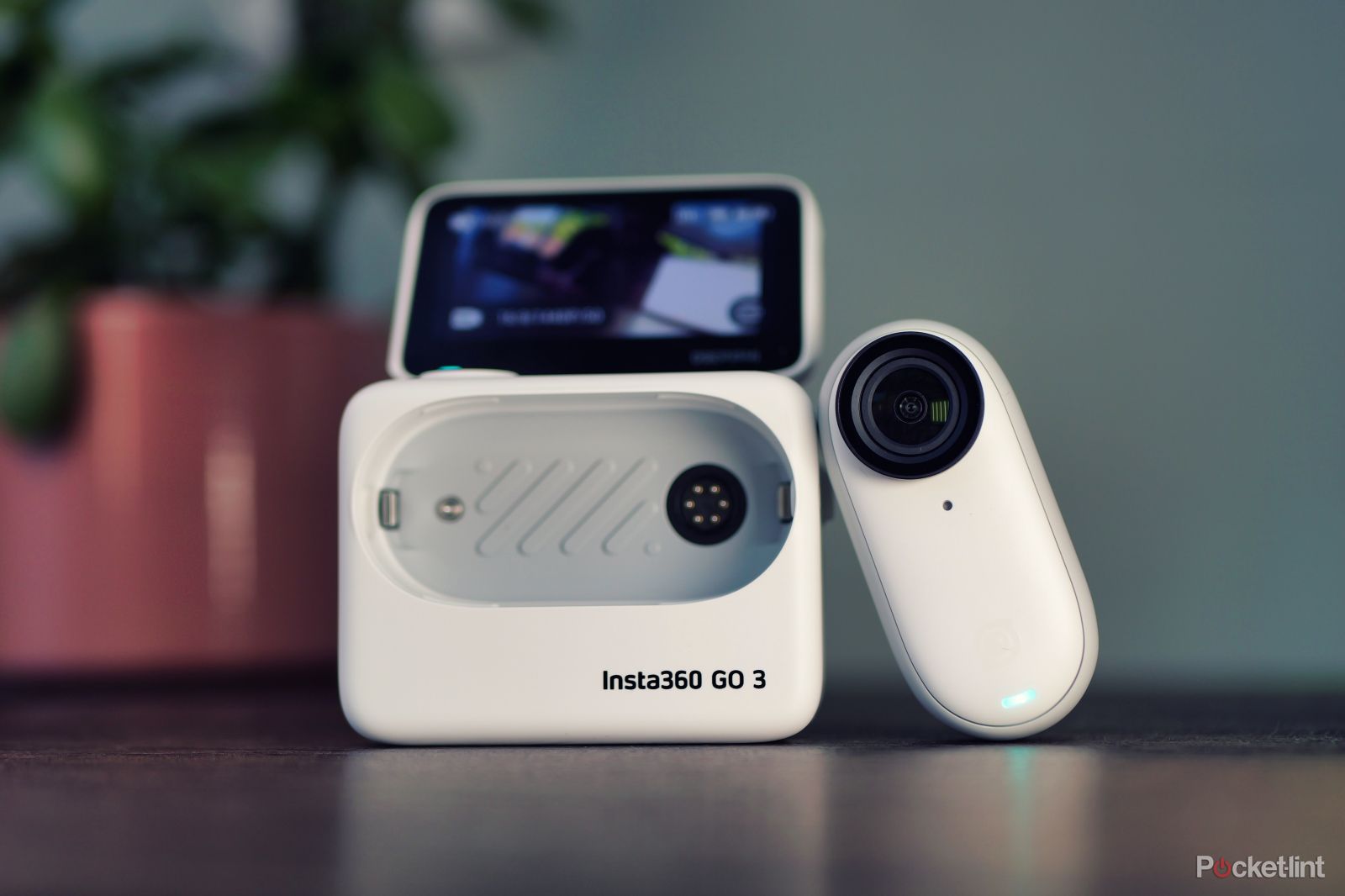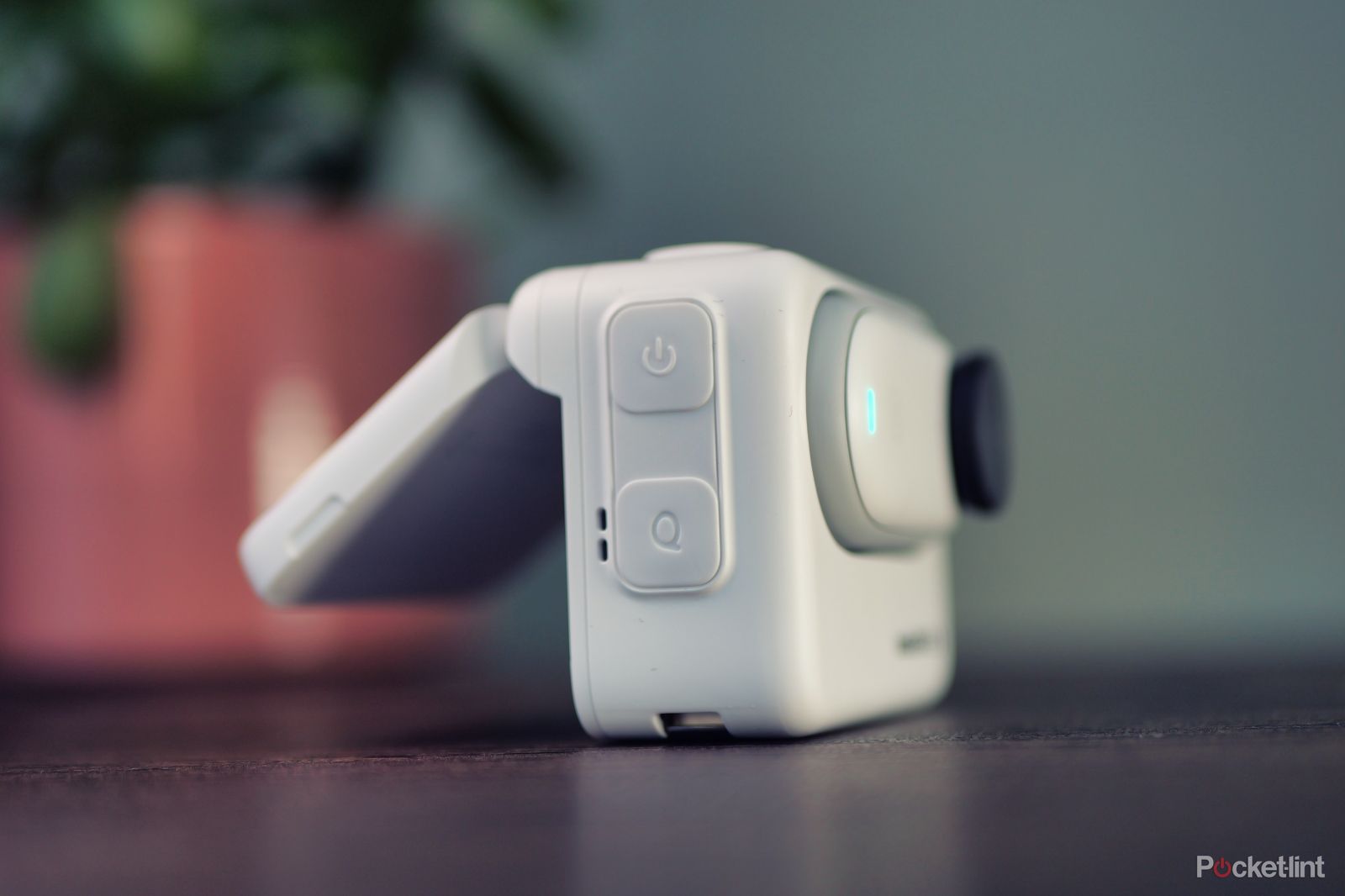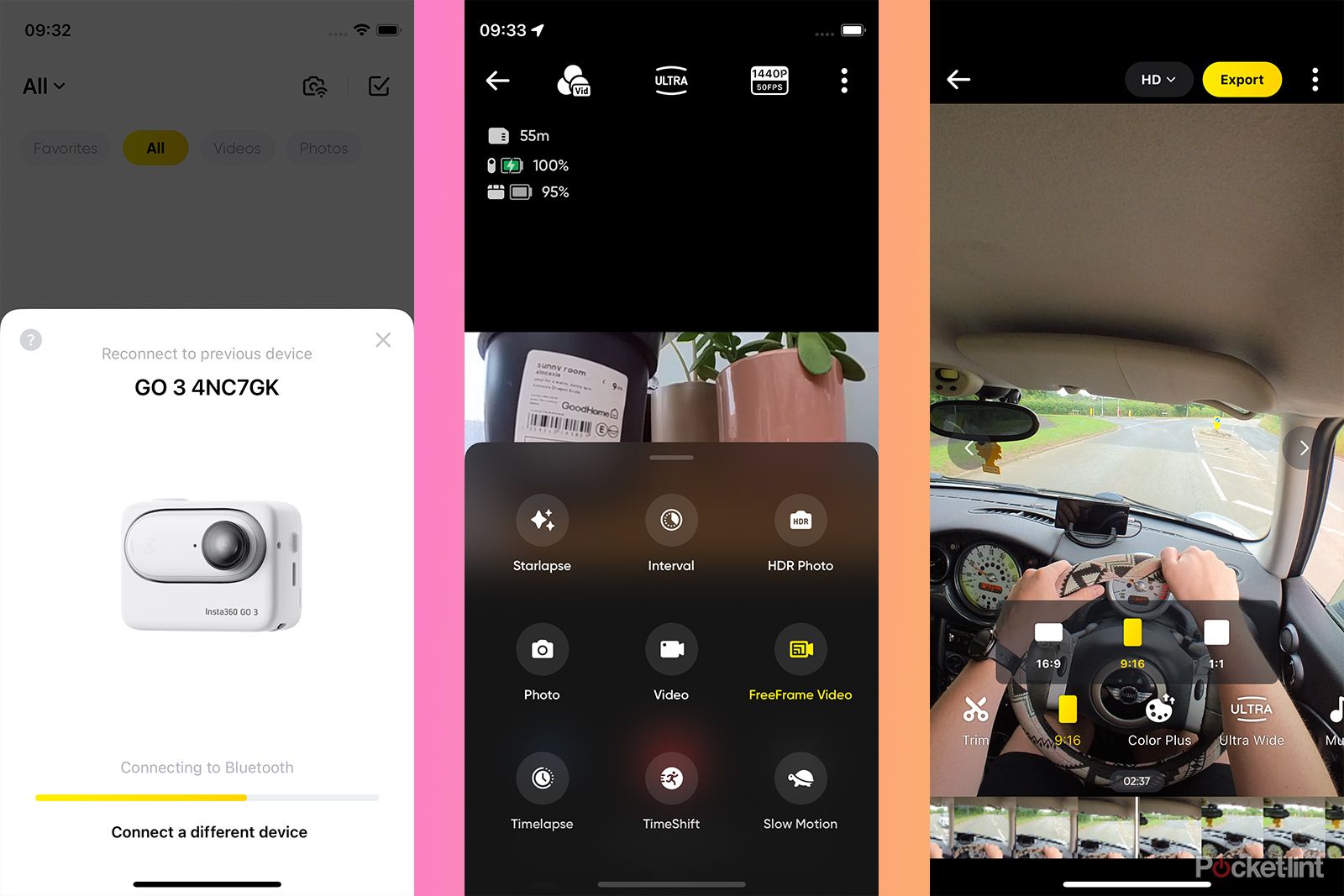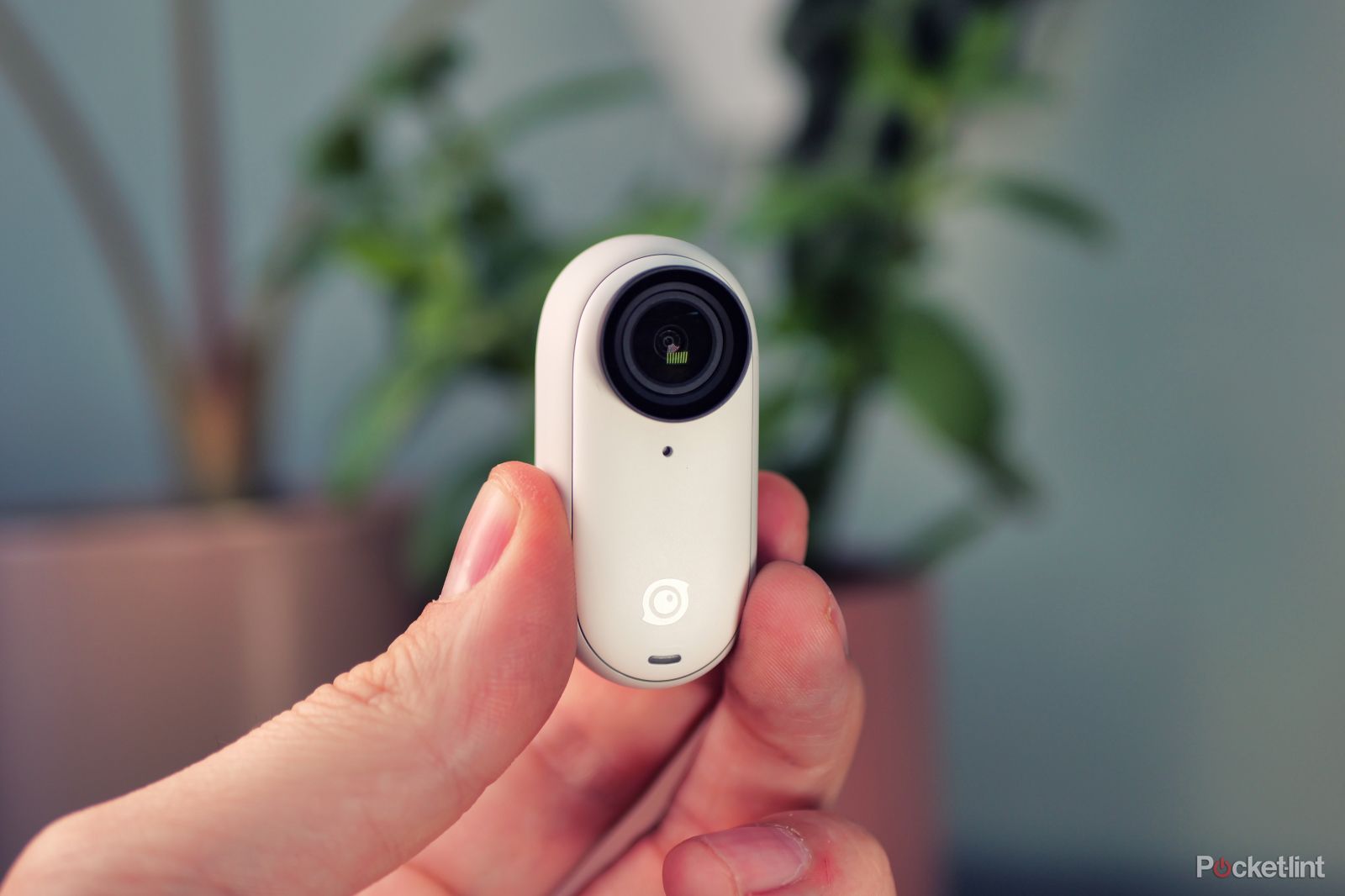I’ve been a massive fan of the Insta360 Go 2 since its release in 2021, it’s a tiny, quirky little camera, and there’s really nothing else quite like it on the market. For situations that require something smaller and lighter than even a GoPro, the Go 2 has been my default solution.
The problem with the Go 2 is that quite a few workarounds are required to get the best from it. It has very weak battery life when used standalone, so it comes with an AirPods-style charging case to make it more usable. There’s also no screen, so you have to pair it with the Insta360 smartphone app to frame your shots and review your footage.
Now, the Insta360 Go 3 has arrived, and it’s looking to solve these issues. It has a new Action Pod that adds a tilting touchscreen, as well as a significantly larger battery pack in both the Pod and the camera itself. There’s also a boost in video resolution and some clever new design tweaks that should make it quicker and easier to set up. I’ve been testing it out over the last few weeks to see if it’s worth the upgrade.
Insta360
Insta360 Go 3
Recommended
The Insta360 Go 3 is a big improvement on what was already my favourite mini-action camera. The new model is much easier to use, has better battery life and improved image quality. It’s a shame that it costs so much more than its predecessor, but for many, the benefits will outweigh the cost.
- The Action Pod makes it so much easier to use
- Improved image quality
- Better battery life
- New latching magnetic mounting system
- Larger storage capacities available
- Not compatible with Go 2 mounts
- Larger and heavier than its predecessor
- Significantly more expensive
Design and included mounts
- Go 3: 25.6×54.4×23.2 mm, 35.5g
- Action Pod: 63.5×47.6×29.5mm, 96.3g
- Magnet Pendant, Easy Clip, Pivot Stand, Sticky Mount
The most obvious design difference, when compared to the Go 2, is the new Action Pod, which replaces the Go 2’s clamshell-style charging case. This unit essentially acts as a charging case, interface and remote for the Go 3.
The Action Pod is about the same size as a GoPro, but the Pod and Go 3 together still come in at around 20 grams lighter than the Hero 11 Black. There are three buttons on the Pod, a record button, a power button and a mode select button. There’s also a USB-C port for charging and data transfer, as well as some latching holes for the new magnetic mounting system.
On the rear, there’s a 2.2-inch flip-up touchscreen, which can be used to change settings, watch your clips and frame your shots. The Action Pod connects to the Go 3 wirelessly, even when it’s mounted in the housing, and this means that you get occasional lag and pixelation of the video preview. However, it also means that the Pod can be used as a remote wireless monitor for the Go 3, and that’s a worthy trade-off in my view.
This means that you can mount the Go 3 on your helmet, chest, or wherever else you fancy, and use the Action Pod to wirelessly change settings and ensure your framing is on point. You could already do this with the Go 2 and the Insta360 smartphone app, but this is a much more hassle-free and convenient way of doing things – mainly because the two units are always paired, and you don’t need to wait for your phone to find the connection.
The camera unit itself looks almost identical to its predecessor, at a glance, but it’s bulked up a bit this time around. This is mainly due to the larger 310 mAh battery that’s inside, replacing the 210 mAh pack in the Go 2, but there’s also an additional microphone, a beeper that lets you know when you’ve started and stopped recording and a more prominent status LED.
It’s marginally bigger in every dimension, and it’s also about 10 grams heavier. For most people, this is no big deal at all, and you’ll barely notice it in practice. However, one of my favourite things to do with the Go series cameras is to attach them to tiny drones, the kind that would have no chance of lifting a GoPro, and there those 10 grams make a huge difference. It also means that the Go 3 isn’t compatible with any of the existing Go 2 mounts, and if you have a lot of them, as I do, that’s a little frustrating.
On the plus side, some excellent mounts are provided in the box, and they cover the most common mounting situations well. There’s the magnetic pendant mount, which was pioneered by the Go 2 and later copied by the DJI Action 2. You wear this accessory under your shirt like a necklace, and it allows you to attach the Go 3 to your chest as if by magic. This time around, it has a new silicone cover that keeps the cord tidy. You can wrap the cord around the pendant like a yo-yo, and the soft silicone sleeve keeps it in place, it’s a really thoughtful touch.
There’s also a mount that Insta360 calls the Easy Clip, this is another accessory that came with the Go 2, although it’s been redesigned to accommodate the larger Go 3. This mount is designed to clip to the brim of a cap, and the Go 3 magnetically attaches to it for hassle-free POV shots.
Finally, there’s a two-parter, in the form of a ball-headed 1/4 20 tripod adapter and a reusable self-adhesive sticky base plate. The adapter attaches to either the Go 3 itself or the base of the Action Pod with Insta360’s new latching magnetic quick-release mounting system. This feels more than a little inspired by DJI’s mounting solution for the Osmo Action 3, but that’s fine by me because it works really well. The units snap together with a satisfying click, and two small levers lock them into place for extra security. It’s the same system on the inside of the Action Pod, too, and you press a small button to unlatch the Go 3 from the housing.
Software and features
- Insta360 app for Android and iOS
- Insta360 Studio for Windows and MacOS
- Pre-recording, Loop recording, Scheduled recording
When it comes to software, we’re in for very few surprises, the Go 3 is compatible with the same mobile and desktop applications as the rest of Insta360’s cameras, and the Flow gimbal, too. As always, this is a good thing, I’m very fond of Insta360’s software, it’s easy to use, simple to navigate and tends to connect quickly and reliably. I did have a few more pairing hiccups with this model than I have with previous cameras, but I was testing with pre-release beta apps, and I’m quite certain this model will be up to the usual standard by the time customers get their hands on it.
Just as we saw with the Go 2, one of the standout features of the Go 3 is its FreeFrame video mode (previously called Pro Video). This allows you to shoot first and make the decisions later, similar to what you can do with the almost-square sensor on the GoPro Hero 11 Black. In this mode, you shoot your video as normal, then in the app, you can choose whether to render the video in horizontal, vertical or square format, as well as change the FOV and stabilisation modes. It’s my favourite way to shoot by far.
Of course, all of the Go 2’s other shooting modes are present here too, including timelapse modes, hyperlapse modes and slow motion recording – up to 120fps at 1080p, just like the Go 2. There are a few additional modes added this time, too.
The Go 3 supports pre-recording, which allows you to capture either 10, 15 or 30 seconds of video before you hit record. As you might expect, this eats up battery life, and when you select it a warning will pop up suggesting that you only enable this feature with the Go 3 docked in the Action Pod.
Also new is a loop recording mode, which allows you to set a duration of between 1 and 10 minutes, and then the camera will record for this amount of time before overwriting the clip with a new one. Essentially, the idea is that if you’re recording while waiting for something to happen, you don’t want a load of useless footage filling up your camera’s storage. So, whenever that thing does happen, you’re left with only the clip of the action once you stop the recording. Most people aren’t going to need this feature, but it’s a nice addition for those who do.
You can also now schedule record times, for example, if you want to shoot a timelapse of the sunrise, but don’t fancy getting up that early, you can set it and forget it with this new feature. Again, it’s a bit of a niche one, and not every user will benefit from this addition, but certain people will be really pleased with this.
Video performance
- Up to 2.7K 30fps / 1440p 50fps
- 360-degree Horizon Lock and FlowState stabilization
- New picture profiles (filters) and image sharpening control
The biggest advantage the Go 3 offers over its predecessor, at least when it comes to image quality, is the fact that it can shoot video at 2.7K, rather than just 1440p. However, there are some caveats. The 2.7K option is not available in FreeFrame mode, and as I mentioned, that’s my favourite way to shoot, so I was pretty disappointed to learn this. Instead, you’ll have to choose your FOV, aspect ratio and stabilization mode before hitting record, and they’ll be baked into the final recording. It’s also limited to 30fps, whereas the Go 3 and Go 2 can shoot at up to 50fps in 1440p resolution.
Despite that, the image from the Insta360 Go 3 does look better than the Go 2, no matter whether you’re recording in 1440p or 2.7K. As far as I’m aware the cameras use the same sensor, so it’s likely some software magic that’s been used to improve the image, but the resulting videos look a bit less grainy and seem to have a wider dynamic range. It’s still nowhere near the quality of GoPro, or the Insta360 One RS, but that’s to be expected from something this small.
You have more control over how the image looks with the Go 3, too. You can find options for controlling the sharpening strength in the Action Pod’s menu system (I couldn’t seem to find it in the phone app) and that’s a very welcome addition. There are also a lot more picture profile options to choose from on this model. The Go 2 had only Standard, Vivid and LOG profiles, while this model adds a whole range of additional looks that are themed around different activities like cycling and watersports. I mainly stuck to the Standard and Flat profiles, as I prefer to adjust my colours in Premiere Pro, but it’s nice to have some additional options for less software-savvy buyers.
As is usually the case with Insta360 products, the stabilisation is very impressive, and that’s especially important on a tiny camera like this. The Go 3 can lock the horizon no matter how much you spin it, or it can simply take the edge off with FlowState. There are now three levels that you can select in the camera, allowing you to choose the right amount of stabilisation for the activity that you’re recording. In good lighting, it’s just about perfect, it’s only when the light gets low that you start to see judders from footsteps in the footage.
Verdict
As I mentioned earlier, I’m a massive fan of the Go 2, so it’s not a huge surprise that I love the Go 3 as well. It takes the same formula, but makes it way easier to use, thanks to the new Action Pod and its touchscreen display. The new magnetic mounting system is awesome, the battery life is better, the resolution is higher and the image is more configurable and cleaner than its predecessor – there’s a lot to love.
It’s not all perfect, though. The biggest drawback is the price, which has been climbing with each generational release. The original Insta360 Go launched at $199, the Go 2 launched at $299 and now the Go 3 starts at $379, climbing all the way to $429 if you want the 128GB model. This is a very niche camera to start with, and I think this higher price point will only serve to limit its appeal further. That said, the price is understandable, I can tell how much R&D went into this design, and the addition of features like a wireless touchscreen display obviously come at a cost, too.
It’s also worth noting that the Go 3 is a touch less portable than its predecessor. The old AirPods-style charging case had a shape that was very easy to slip into your pocket, and that meant that the Go 2 was very easy to take with you. The Go 3, in its Action Pod, will still fit in most pockets, but it’s now a chunky block and the lens is exposed, which means that I’d be very hesitant to carry it in this way.
Still, for most of this camera’s audience, I think the positives far outweigh the negatives. It’s undoubtedly the best mini-action camera around, and now that it’s not quite so challenging to use, maybe more people will start to see the creative potential that a tiny and featherlight camera unlocks.
Trending Products

Cooler Master MasterBox Q300L Micro-ATX Tower with Magnetic Design Dust Filter, Transparent Acrylic Side Panel, Adjustable I/O & Fully Ventilated Airflow, Black (MCB-Q300L-KANN-S00)

ASUS TUF Gaming GT301 ZAKU II Edition ATX mid-Tower Compact case with Tempered Glass Side Panel, Honeycomb Front Panel, 120mm Aura Addressable RGB Fan, Headphone Hanger,360mm Radiator, Gundam Edition

ASUS TUF Gaming GT501 Mid-Tower Computer Case for up to EATX Motherboards with USB 3.0 Front Panel Cases GT501/GRY/WITH Handle

be quiet! Pure Base 500DX ATX Mid Tower PC case | ARGB | 3 Pre-Installed Pure Wings 2 Fans | Tempered Glass Window | Black | BGW37

ASUS ROG Strix Helios GX601 White Edition RGB Mid-Tower Computer Case for ATX/EATX Motherboards with tempered glass, aluminum frame, GPU braces, 420mm radiator support and Aura Sync















